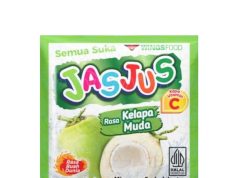With their burgeoning B2C business, the “last mile” problem also affects department stores. As department stores shift more of their sales online, they are increasing coming to grips with the reality of B2C and the challenges of delivering their goods to shoppers. The solution for some is to set up their own convenience stores.
Rainbow Department Store announced in early April 2014 that it plans to establish its own network of convenience stores to address the “last mile” problem. The first outlet will open in Shenzhen in June 2014. Apart from selling through the physical stores, the proposed convenience stores will encourage consumers to buy online as more products will available on the online store.
Rainbow Department Store was not the first department stores to dabble into convenience stores. Better Life Commercial Chain already has a network of Huimiba convenience stores in Changsha city since 2011. There are about 18 stores listed on the website. Shirble Department Store runs its own chain of 24-hour Shirble Express convenient stores. These convenient stores are effective platform for O2O.
| Shanghai Hualian Lawson still bleeding |
Amidst the positive signs that convenient store is the perfect vehicle for O2O to fill the “last mile” gap, the key problem facing convenient store chain operators in China is the lack of profit. Many leading chains including 7-11 in Beijing and Lawson in Shanghai do not make money. In fact, they are operating at a loss. Shanghai Hualian Lawson, the company that runs the Lawson chain in Shanghai, has been unable to make a profit.
| E-Commerce China Dangdang Inc IPO in November 2010. Look what happens after the IPO? |
Even B2C players are not making money. JD.com in its updated IPO prospectus said its net loss in 2013 was RMB50 million (US$8.11 million), narrowed from a net loss of RMB172 million a year ago. There is a 50-50 chance that JD.com will swing into profit in 2014 as it needs a clean set of financials for its IPO (We all know what happens to NYSE:DANG). It is thus safer to say JD.com revenue is expected to continue to rise. In 2013, the company posted revenue of RMB69.34 billion (US$11.24 million), up from RMB40.35 billion a year ago.
The whole B2C is on shaky ground as many B2C retailers themselves are burning cash hoping to outlast their rivals. That is why they need raise cash from IPOs. Using convenience stores to bridge the “last mile” gap can be a solution for the logistics problem. However, for convenient stores, the alliance with B2C companies needs to be profitable to both parties as convenient stores are also in desperate need to put their business on a profitable footing without which their business will not be sustainable. Therefore O2O is a marriage of convenience between B2C and convenient stores.














